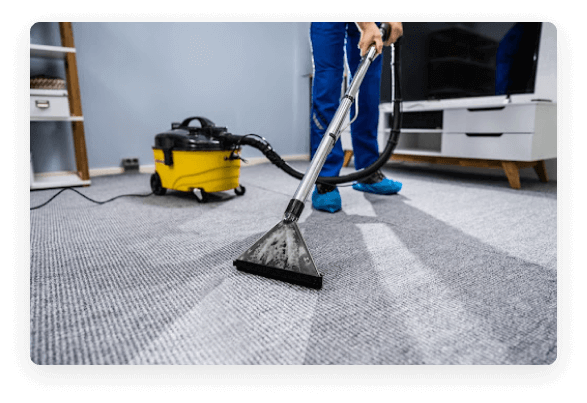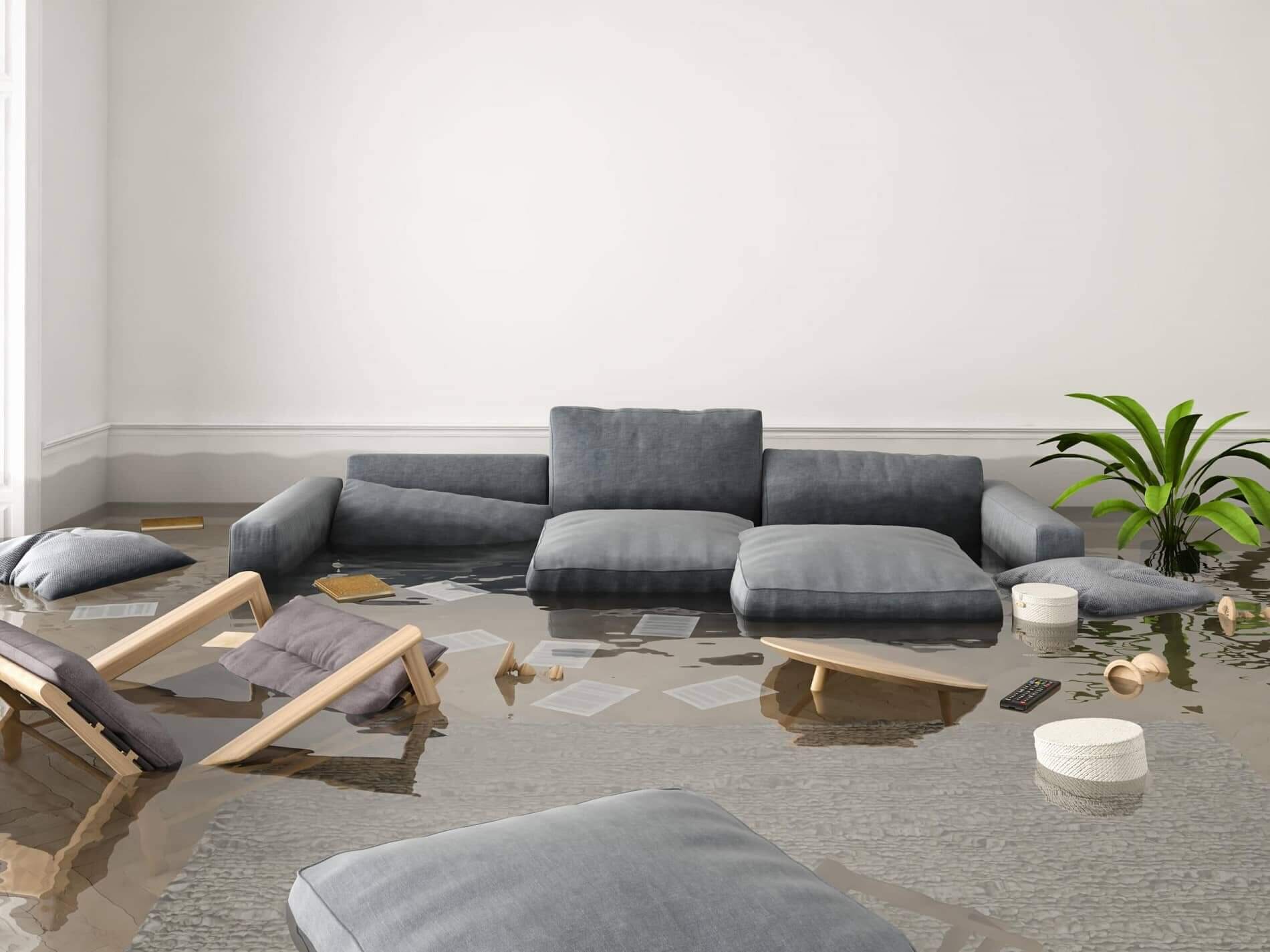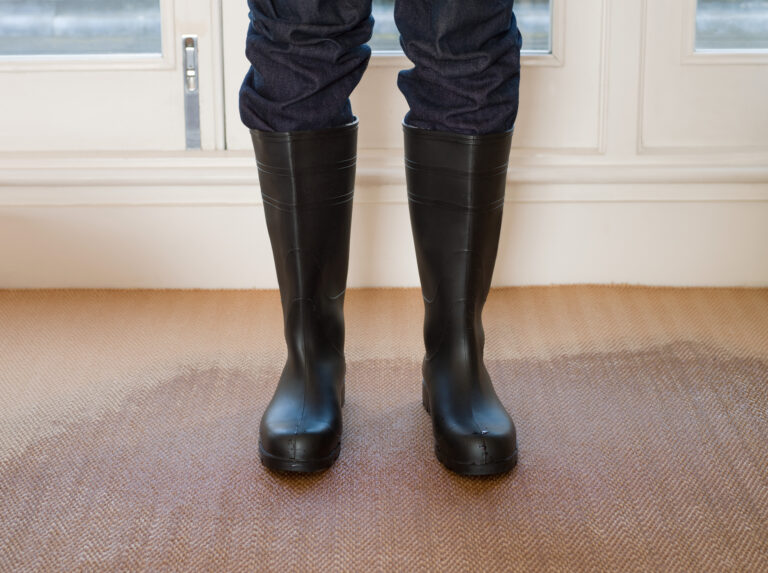Whether due to a storm, flash flood or broken appliance, water can infiltrate your home when you least expect it. The resulting damage to your property is not only expensive and frustrating, but it may also put you – and other residents – in potential danger.
To help you manage in the immediate aftermath of a water incident, our water damage restoration checklist will explain everything you need to know. Make sure you also contact a professional who can provide water damage help and ensure your house water damage is repaired in a timely manner.
What is Water Damage?
Water damage is simply defined as any physical damage that affects a property (or contents) due to it coming into direct contact with water.
Water damage itself is an umbrella term that covers a number of different ways that your home or belongings may be damaged by water. It could be something as small as water leaking for an extended period in one particular spot, or something more major like a burst water main or broken appliance. It can also be caused by forces outside your control, such as floods and storms.
The end result is things like your personal belongings or parts of the physical property (carpet, walls, ceiling, etc.) becoming sodden and damaged.
Types of Flood Damage
There are different types of floods that can affect your home, just as there are different types of flood damage. For the former, floods are generally broken into three categories: flash flooding, riverine flooding and coastal flooding. Flash flooding is usually due to heavy rain that occurs within a short period of time, whereas riverine (broken river banks) and coastal (dry and low-lying land is covered in sea water) floods are dependent on location.
When it comes to the various types of flood damage, these are usually split into three categories as well: clean, grey and black.
- Clean water damage (aka Category 1 water damage) includes burst pipes, broken refrigerators and overflowing tubs, for example.
- Grey water damage (aka Category 2 water damage) includes water from toilets and washing machines that may contain chemicals and waste.
- Black water damage (Category 3 water damage) is sewage, flood water, seawater, river water and rising ground water.
Water Damage Checklist
The following water damage restoration checklist will walk you through the essential steps to take after you become aware of water damage in your home.
1. Identify the Reason
When you seek water damage help from a restoration professional, they will ask you for the reason behind the flood damage. Use the information provided above about the different types of flood damage, the flooding event, as well as how damaged your property or belongings are. This information will help clarify the level of urgency required to get the water damage seen to.
2. Evaluate Safety and Conduct a Water Damage Inspection
The most important consideration when dealing with water damage is your own safety. If the damage is severe or if you are unsure what type of water damage you are dealing with, wait for a professional to repair the house water damage. If you have experience with water damage, you may want to inspect the situation yourself to identify the water source, the water contamination category, and the water damage class.
3. Determine Insurance Coverage
Depending on the severity of the house water damage, repairs may be required. So your next step is to retrieve your home and contents insurance policy. This document will outline what is and isn’t covered in the event of water damage or a flooding event. If you don’t have an adequate level of insurance or if your policy doesn’t cover water damage, this may influence the cost or speed of water damage restoration.
4. Evaluate Damage
It’s important that you inspect all parts of your house – not just the first affected room – to see how much water damage help you really need. A professional will be able to conduct a thorough inspection of the property and find areas where you might not have noticed water damage, such as water-damaged floorboards beneath the carpet. However, you can also analyse the damage by inspecting your appliances, furniture, walls and ceiling, as well as flooring and even outside your home. Because water can damage concrete as well, the extent of the structural damage may not be visible to the naked eye.
5. Determine What Can Be Salvaged
At least when it comes to your own finances, one of the most important parts of any water damage restoration checklist is to do a stocktake of all the affected items. As you inspect your home, take careful notes about any of your belongings, appliances, furniture or parts of the home that have been damaged by water. It can be helpful to rank them on a numbered scale from best to worst, as this will clarify what can be fixed and restored and what cannot.
6. Determine What Can’t Be Repaired
As you work through your itemised list of water-damaged areas and belongings, you may come across house water damage that can’t be repaired. If this is the case, make sure you take photos of the damage as well as clear notes about what the item or part of the home is, the level of damage, and whether you believe it can be salvaged or must be replaced. Unfortunately, any level of water damage may require some items to be removed or replaced.
7. Find A Professional
When you do require water damage help from a professional restoration company, it’s important to do your research and ensure they meet your specific needs. The best property restorers will have a team of experts, high-quality restoration equipment and a history of successful jobs. It’s a good idea to read reviews from previous customers, and look into their accreditations, certifications and affiliations. Also, make sure they have a breadth of services that you may need to use, such as mould removal and decontamination.
8. Analyse Structural Damage
This may be a step that you can’t undertake yourself. The good news is that any experienced professional who does flood and water damage restoration will be able to analyse structural damage in-depth and provide water damage help. When flooding occurs, the walls and foundation of your property may be damaged by hydrostatic pressure. Worse, if the problem isn’t addressed and water damage is left unattended, your home may even start to sink into the ground due to structural instability. That’s why it’s so important to have any water damage attended to immediately to ensure the structural damage is fixed.
9. Sanitise and Disinfect
In some cases, the water damage won’t be so severe that you need to leave the house while it gets fixed. Depending on your circumstances, house water damage repairs can be completed quickly and without too much interference with your daily life. However, any affected areas of your property will need to be sanitised and disinfected in order to reduce the risk of microbial transmission and the effects of mould and other damaging air particles following water damage.
Water Damage FAQs
Here are some other frequently asked questions you might have about how to get water damage help.
What Can Be Saved After a Flood?
As part of your water damage restoration checklist, you may have created an itemised list of all your belongings and areas of the house that have been affected. Some may be salvageable while others may have to be removed or replaced. Here are some of the items that should be taken outside and dried completely to see the extent of the water damage:
- Furniture
- Appliances
- Bedding
- Rugs and carpets
- Clothing
- Toys
- Books and papers
Items that use electricity and are water damaged may no longer work or may be dangerous to use while there is still moisture present. When it comes to areas of your house that are water damaged, you will need to speak to a flood restoration specialist to know what can and can’t be fixed after a flood. Restate can dry your carpet, repair flood water damage and restore your home or property to its previous condition.
How Long Does It Take to Dry a House?
That will depend on various factors, including the severity of the water damage to your home or type of flood damage event, the size of the damage (i.e. just one small area or your entire property), as well as the weather conditions following the event. If it continues to rain, for example, then it will take longer to dry your house.
With these factors in mind, it may take anywhere from two to five days to completely dry a house that has been exposed to water or moisture.
Does Carpet Need to Be Replaced After a Flood?
Depending on just how sodden the carpet gets after a flooding event or water damage, it may be possible to dry and salvage it, or it may need to be removed and replaced. A professional flooded carpet cleaning and drying specialist will be able to assess the water damage repair needed in your home and provide their expert advice on what you should do about the carpet.

Final Thoughts
While no one wants to experience the frustrations and financial burden of water damage, it’s an unfortunate part of life for many homeowners. From something as simple as a broken-down washing machine, through to a catastrophic event like flash flooding, water can cause unwanted damage to your belongings and your property.
Hopefully this detailed water damage restoration checklist helps illuminate the essential steps to take following a water damage event. What’s most important is that you stay safe in your home and reach out to experienced water damage professionals like Restate Property Restoration to help return your home to its original glory.
Why Work With Restate?
At Restate, we pride ourselves on being a market-leading supplier of numerous property-restoration services. In addition to flood and water damage help, we also conduct mould removal and restoration, decontamination, sanitation and disinfection, and flooded carpet cleaning and drying services.
If you are experiencing water or flood damage in your home and want urgent support from experienced professionals, contact us today. Call us on 0800 332 664 or email info@resspec.co.nz.




